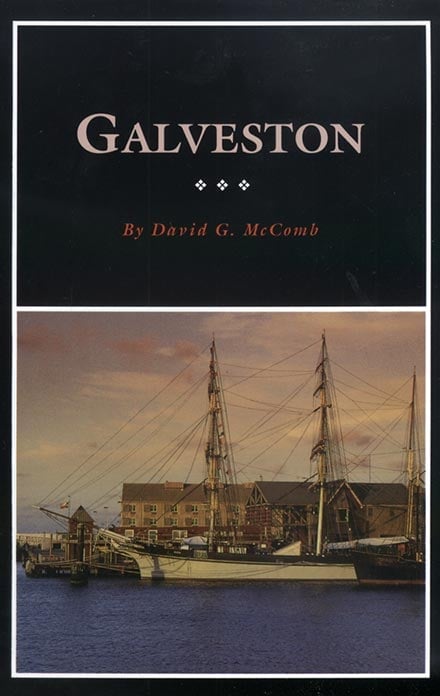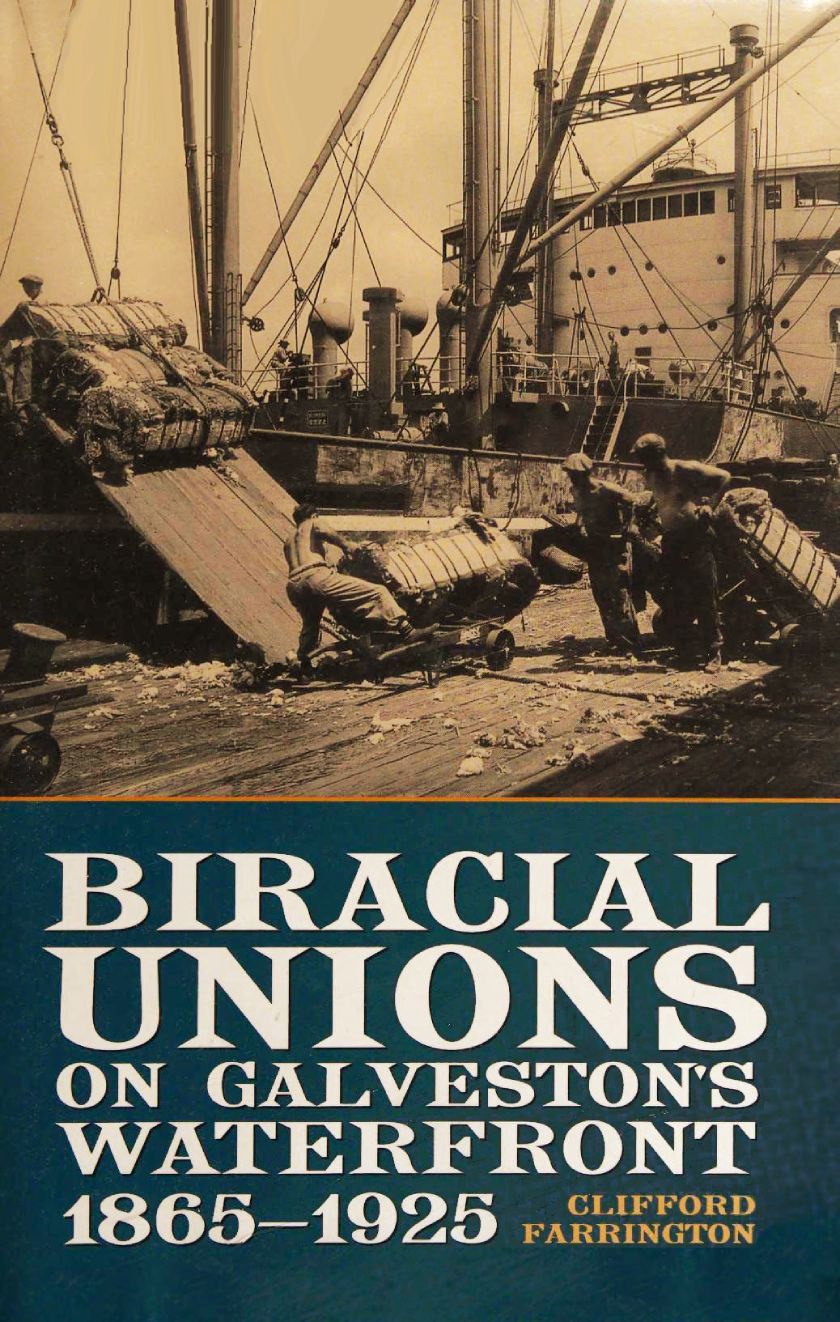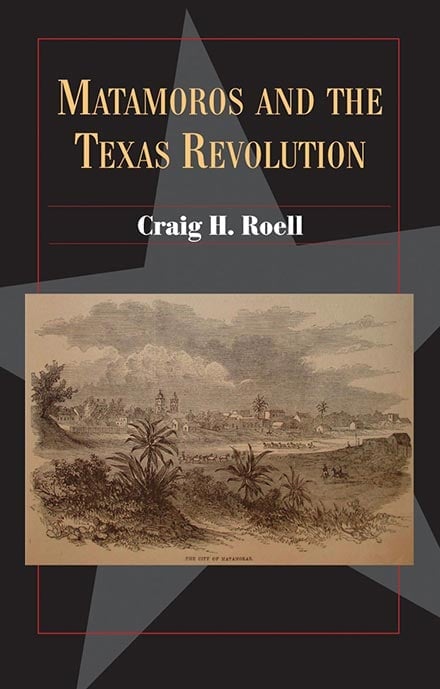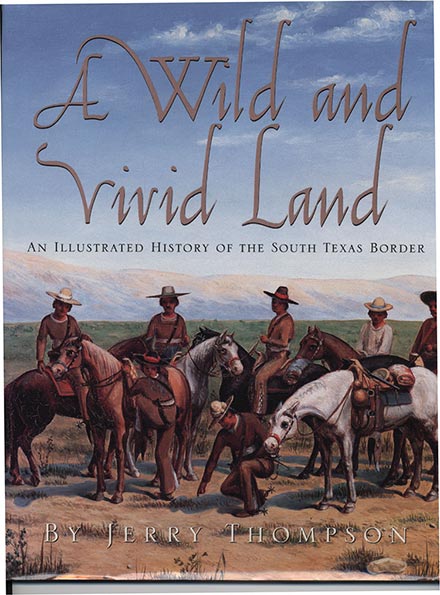For 624 miles, from the Rio Grande delta to Sabine Pass, the Gulf of Mexico washes the Texas shore. This partially landlocked body of water, an indentation in the southeastern coast of North America, served as an avenue for discovery, exploration, and settlement of the southern and western sectors of what is now the United States as well as Mexico: the initial approach to the mainland continent. It brought the Spanish conquerors to Mexico and Texas, French colonists to Louisiana, and, somewhat later, settlers of numerous other nationalities to the republic and state of Texas. Today, the Gulf serves a vital commerce. It links the ports of five southern states and Mexico with the larger ocean and forms the basis of the various Marine Resources of Texas, which include navigation, recreation, oil and gas, commercial fisheries, oysters, and shell. The Gulf is open to the Atlantic Ocean through the Straits of Florida and to the Caribbean Sea through the Yucatán Channel. These passages, approximately 100 and 125 miles wide respectively, lie on either side of the island of Cuba, which extends into the Gulf's mouth "like a loose-fitting bottle cork." The United States and Mexico form the Gulf's mainland shore, which extends more than 4,000 miles from the Florida Keys to Cabo Catoche, the northwestern promontory of the Yucatán Peninsula. Sharing the Gulf coast are Florida, Alabama, Mississippi, Louisiana, and Texas, as well as the Mexican states of Tamaulipas, Vera Cruz, Tabasco, Campeche, Yucatán, and Quintana Roo.
The Gulf's waters cover 500,000 square miles and plunge to a depth of 2,080 fathoms (more than 12,000 feet). This deepest part is Sigsbee Deep, an irregular trough more than 300 miles long, sometimes called the "Grand Canyon under the sea." Its closest point to the Texas coast is some 200 miles southeast of Brownsville. The cooler water from the deep stimulates plankton growth, which attracts small fish, shrimp, and squid. These and other sealife that feeds on plankton attract larger fish to make this a prime fishing ground. Biologists have counted more than 300 fish species off the Texas shore. Drainage of some 1,250,000 square miles is brought to the Gulf by the various rivers that discharge into it. Its water volume is calculated as 559,000 cubic miles. Through the Gulf courses the Caribbean Current, which enters from the Caribbean Sea through the Yucatán Channel and makes a circuit of the Gulf. The dominant feature of a complex system of currents in the Gulf, it flows out through the Straits of Florida and the Bahama Channel, where it joins the Antilles Current to form the Gulf Stream. As early as 1519, Spanish navigators recognized this flow as an aid to navigation into and out of the Gulf. The current, in combination with the prevailing wind, determined the course of the Spanish fleets, aiding them on their entire round-trip voyage from Europe. Ships entered the Gulf through the Yucatán Channel and rode the prevailing wind and current westward to the port of Veracruz. These forces, changing directions against the Mexican coast, favored ships returning to Spain by carrying them north and east into the Straits of Florida and the Bahama Channel. Not all aspects of the intricate system of currents are understood, even today; it is still the object of scientific study. Tides—ocean waters' response to gravitational pull by the moon and the sun—help to keep the waters in motion. The Gulf of Mexico, under ordinary conditions, has tides of two feet or less, but on the wide and shallow shelf such a variation is quite noticeable.
The Gulf's geologic origin remains uncertain. Various theories pose that it is a foundered and ocean-flooded continental crust, an ocean basin that has been subjected to rifting, or an ancient sea that has existed since the various continents formed a single land mass. Scientific drilling of the sea floor had not been able by 1994 to provide a complete answer. The long-term international Ocean Drilling Program, headquartered at Texas A&M University, seeks solutions to such riddles of oceanic geology by taking cores from ocean bottoms. It also gathers information on the origin and evolution of life in the sea, the shifting of the earth's continental plates, and other data pertinent to the Gulf, as well as the world's oceans at large.
The Texas shoreline is characterized by seven barrier islands: Galveston, Follet's, Matagorda, St. Joseph's (San José) , Mustang, Padre, and Brazos. Padre Island is the longest barrier island in the world. These islands, formed 5,000 to 8,000 years ago, are the survivors of several sets of barriers that have existed along the northwestern Gulf Coast during the last million years, formed and destroyed by fluctuating sea level (usually related to glaciation) and the resultant shoreline alteration. During the four major glacial periods that covered North America with ice, the sea level was lowered by some 100 meters, exposing the continental shelf. Consequently, rivers emptying into the Gulf deepened their channels and carried sediment seaward. In the warmer interglacial periods, when the sea level rose, estuarine sediments and fossils were left on the shelf. Corral reefs, known to fishermen as "snapper banks," were formed from hard shale forced up by salt domes. These banks are found in the northwestern Gulf west of 91° west longitude. The Flower Garden Banks, the northernmost coral reefs on the North American continental shelf, lie about 110 miles southeast of Galveston. More than fifty feet under the surface, "flowers"—actually, brightly colored corals and other marine animals and plants that attract both sport divers and scientists—blossom in brilliant hues. The two banks, resting atop salt domes and encompassing areas of about 100 and 250 acres, were designated a marine sanctuary in 1992 (under the Marine Sanctuary Program established by the United States Congress in 1972) by the National Oceanic and Atmospheric Administration.
Credit for the first European discovery of the Gulf belongs to Sebastián de Ocampo, a Spaniard who circumnavigated Cuba in 1508–09 and returned to Santo Domingo (Hispaniola) with news of the body of water that lay beyond. Thereafter, the Gulf served as a primary approach to the North American mainland. Before that, and after Columbus's discovery of the Antilles, several maps portrayed what latter-day interpreters have assumed to be the Gulf, thereby disputing the actual discovery date. The basis for such cartography, however, is uncertain. It may be considered either hypothetical (as the 1500 map of Juan de la Cosa) or as representing the coast of Asia in keeping with Columbus's concept (as the 1502 prototype known as the Cantino map). The first known mainland landing within the Gulf of Mexico by Europeans was Juan Ponce De León's on the Florida peninsula in 1513. The next three voyages to penetrate the "hidden sea"—those of Francisco Hernández de Córdoba, Juan de Grijalva, and Hernán Cortés, 1517–19—focused on the southern Gulf. Shortly after Cortés's departure from Cuba early in 1519, destined for the conquest of Mexico, Alonso Álvarez de Pineda sailed from Jamaica to probe the Gulf's northern shore and western perimeter, seeking a strait to the Pacific Ocean. This voyage provided the "Pineda map," the first cartographic representation of any part of Texas, as well as of the Gulf itself. Álvarez de Pineda's crew were the first Europeans to glimpse the Texas coast. Although Álvarez's sketch provided no place names along the Texas shore, descriptive terms that still apply began appearing on Spanish maps: words that suggest a low-lying coast subject to flooding and lack of a secure anchorage. The Gulf itself remained nameless until the early 1540s, being considered a part of the Atlantic Ocean or "North Sea." The Spanish name most often applied to it was Seno Mexicano (seno = "gulf" or "bay"), although it was occasionally referred to in maps and documents as Golfo de Nueva España, Golfo de México, or a variant. For more than a century and a half after its discovery, it remained a sacrosanct "Spanish sea," forbidden to other nations.
Almost all European contact with Texas during this early period was through the Gulf of Mexico. Visitors included the expedition of Pánfilo de Narváez (1528); the remnant of the Hernando de Soto entrada, led by Luis de Moscoso Alvarado, in 1543; salvagers of the Padre Island Spanish shipwrecks of 1554; and Guido de Lavazares, who landed at Matagorda Bay in 1558. Such expeditions advanced the Spanish mapping of Texas and began the study of the Gulf's hydrology, which continues today. The practically oriented Spanish pilots compiled a rudimentary bottom profile of coastal waters with no more advanced technology than the sounding lead. With this primitive but effective device, they determined not only the water depth "within soundings" but also a description of the bottom material. This latter information, recorded in sailing instructions kept in the Casa de Contratación in Seville, helped establish the identity of a given location by the nature of the sediment. It also provided a clue to the bottom's suitability for holding an anchor. These early expeditions accomplished nothing toward the occupation of Texas. In that sense, the more meaningful exploration followed the Texas landing of the La Salle expedition (1685). Spanish voyages seeking La Salle's settlement included the first complete circumnavigation of the Gulf (by the Rivas-Iriarte expedition, 1686–87) and brought forth names for Texas and Louisiana coastal features that graced European maps for years to come. Whereas the French intrusion motivated Spanish interest in the middle Texas coast, the intractable Karankawa Indians, holding the barrier islands from Galveston Bay to Aransas Pass, forestalled Spanish control. Aided by forbidding geography, they prevented the opening of a Gulf port, the lack of which imposed a severe handicap on Spanish activities in Texas.
Although the Mexican coast was explored and much of it settled in the sixteenth century, some segments remain inaccessible by motor vehicle in the twentieth. The last area to be subdued and occupied during colonial times was the coastal strip known as Nuevo Santander, or Costa del Seno Mexicano, which comprises what is now the Mexican state of Tamaulipas and that part of Texas between the lower Nueces River and the Rio Grande. Since the first Europeans sailed the Gulf of Mexico, the body of water and its littoral have been severely affected by man and nature. River deposits contribute to nature's work, but storms and hurricanes claim a greater share of the consciousness of coastal residents. With seeming regularity, hurricanes—spawned either in the eastern Atlantic Ocean, the Caribbean Sea, or the Gulf itself—regularly ravage some part of the Gulf shore during the months of June to November. Although most often viewed in terms of their destructive force, the high winds and accompanying storm surge have played a large part in sculpting the shore. Hurricanes and storms, while destroying one island, may build another. Their beneficial effects for the Gulf and its littoral include reviving drought-stricken wetlands, balancing the salinity and stirring up nutrients in coastal estuaries (the spawning areas and nurseries for commercial fisheries), and moderating the atmosphere.
From the beginning of European settlement in the Gulf, human beings have placed themselves at odds with these natural forces and have often paid the price. On April 29, 1554, an equinoctial storm drove three Spanish treasure ships aground on Padre Island with heavy loss of life and cargo. In early September 1766 a hurricane scattered a Spanish fleet crossing the Gulf, driving ships aground in Louisiana and Texas and destroyed the Spanish mission (Nuestra Señora de la Luz) and presidio (San Agustín de Ahumada) on the lower Trinity River. The list goes on. The more intense the coastal development, the greater the potential for destruction by hurricanes. Developers, vacationers, and condominium owners often assume an uncompromising attitude in facing the killer hurricanes, refusing to acknowledge that the Gulf beaches and barrier islands actually belong to the sea. A case in point is the intensive development of South Padre Island, a part of the 113-mile stretch of barrier sand between Corpus Christi and the Rio Grande. This development, with apartments and condominiums built on bulldozed dunes, has been built since Hurricane Beulah sliced the island into thirty-one segments in September 1967. Considering the pitfalls of predicting a hurricane's path and timing, forecasters cringe at the thought of the loss that a Beulah-like storm might cause in the same area today.
Projections indicate that the Texas Gulf coast will have 5.3 million residents by the year 2,000. The more people, and the greater the demands placed on the Gulf's environs, the more critical becomes the effect on the natural balance. Various studies and government reports note that 225 Texas acres of topsoil wash into the Gulf each year. Louisiana is similarly plagued, losing more than fifty square miles of topsoil a year to erosion. The United States Army Corps of Engineers estimates that 60 percent of the Texas shore is eroding, 33 percent stable, and 7 percent advancing. One factor contributing to beach erosion is the impoundment behind large dams of river water that would normally supply beach-building materials. The reduced river flow results in the formation of settling basins that trap sediments before they reach the Gulf. Other "high-tech" engineering projects also contribute to the problem by curtailing the free exchange of sediments. "Manmade sand traps" along the shore now include six deep channels and several long jetties. Additionally, the Gulf and its beaches are being polluted by hundreds of thousands of gallons of oil and hazardous materials that spill into the water annually. More than 500 tons of trash washes ashore each year. Under state or federal protection are Aransas National Wildlife Refuge, wintering ground of most of the world's whooping cranes in the wild; Padre Island National Seashore, the nation's longest stretch of undeveloped beach; and several other shoreline segments. The preserves stand in contrast to "dream homes" and amusement parks built on fragile stretches of barrier sand.
The Gulf coast is the center of the state's oil refining and petrochemical industries. They are served by the Gulf Intracoastal Waterway, which extends 1,200 miles from Brownsville to Carrabelle, Florida, its course passing within the Texas barrier islands and thence mostly through channels dredged inside the coast. The waterway traverses the heart of the endangered whooping cranes' refuge with hazardous cargos of crude oil, benzene, carbon tetrachloride, hydrochloric acid, and other caustic chemicals; a mishap could be disastrous. The waterway must be dredged to remain open. Disposal of spoilage—some 400 million cubic yards of silt a year—gives rise to environmental threats, which must be balanced against the economic benefits. Environmentalists are generally opposed to expanding the waterway to accommodate more traffic and larger vessels, claiming that wetlands would be endangered by resultant incursion of salt water. Yet the waterway is credited with reducing the hypersalinity of the Laguna Madre (enclosed by Padre Island), which resulted in large fish mortalities in the 1930s and 1940s. From an economic standpoint, the waterway has proved highly cost-effective. It moves some eighty million tons of cargo along the coast each year. The waterway and the industries that depend on it provided more than 145,000 jobs in 1986.
The Gulf itself is one of the world's most concentrated ocean shipping areas. Cargo received and shipped through Texas ports in 1990 totaled more than 335 million tons, of which 321 million tons was handled by thirteen major ports. Eighty percent of this tonnage in 1986 was made up of oil and petrochemical products. Because of its location on the Gulf of Mexico, Texas is economically linked to Latin America, especially to Mexico, with which it maintains an important trade relationship. Texas port facilities have generally been closely linked to offshore drilling for oil, a situation somewhat altered by a downturn in the oil and gas industry in the mid-1980s. Refuse from both ships and oil rigs, which punctuate the continental shelf of both the United States and Mexico, has contributed to the Gulf's being labeled the "dumping ground for a hemisphere's trash." An international treaty known as MARPOL now makes such trash dumping in the Gulf illegal, but the measure is considered unlikely to bring a complete solution: the same ocean current that aided sailing ships entering the Gulf from afar also brings trash from afar. Detritus from near the equator has been known to wash up on Padre Island National Seashore, where the shore current seems to "suck in" debris, and sometimes shipwrecks. The prevailing southeasterly wind produces wave trains that strike the beach at a slight angle, generating a longshore drift on the upper coast. In the coastal-bend area, this shore current meets a north-flowing current driven by opposing winds; the impeded flow deposits its flotsam upon the shore. This effect is perhaps most noticeable on North Padre's Big Shell Beach, which offers a constantly changing array of sea-borne debris, as well as a kaleidoscopic assortment of shells. MARPOL is but one manifestation of the growing concern for the Gulf environment. With some 1,000 oil spills, major and minor, occurring each year on the Texas coast, the Texas legislature has enhanced the state's response system. Responsibility for the effort is assigned to the General Land Office, which has pushed for oil-spill reforms, beach and shoreline erosion programs, better beach access, and protection of coastal habitats. That protection of Texas beaches and wildlife does not rest solely upon state solutions, however, is demonstrated not only by the debris-laden current from outside the Gulf but also by episodes like the 1979 blowout of a Mexican oil well in the southern Gulf. The well, Ixtoc 1 in the Bay of Campeche, for a time spewed some 30,000 barrels of oil a day into the sea. Borne across the Gulf by the current, a resulting oil slick reached the Texas barriers two months later; birds sickened, beaches blackened, and tourists departed. The state braced for a major disaster, which it was spared only by a seasonal change in wind and current. Nevertheless, a two-month clean-up effort was required on the 125-mile stretch from Port Isabel to Port Aransas, and lumps of Ixtoc tar were still washing ashore years later with each springtime warming. A scientist of the University of Texas Marine Science Institute at Port Aransas has predicted that the effects may last as long as thirty years; others believe they will last twice that long.
The Marine Science Institute, along with the Sea Grant College program of Texas A&M University, is concerned with understanding the Gulf of Mexico and attacking its problems. Since the institute was founded in 1941, following a massive fish kill resulting from a "red tide" in 1935, it has studied the phenomenon—which recurred in the Gulf in 1986—and its causes. It also studies the role of seaweeds and seagrasses in aquatic food chains, circulation and exchange processes in the oceans, and the physical properties of seawater in bays and estuaries of the Gulf of Mexico and the world's oceans. The institute is looking into the feasibility of natural spawning of saltwater fish and shrimp in captivity for commercial production. The Texas A&M Sea Grant program participates in the Institute of Marine Life Sciences, which has headquarters in Galveston. The focus is on protection of coastal waters from pollution by industrial and human waste, ships, and recreational boating.
In recent years a sharp decline has been observed in the Gulf shrimp catch. Though overfishing is considered the primary culprit, freshwater runoff in the heavy rainfall years has stressed shrimp development and contributed to a decline in the harvest. In 1994 the Texas Shrimp Association and the Texas Parks and Wildlife Department were attempting to hammer out regulations to ease the shrimpers' plight. Industry spokesmen note that the shrimping industry constitutes 94 percent of all reported commercial fishing in Texas and provides 30,000 jobs with annual payrolls of $326 million. This dominance results from a number of causes, including the fact that the public favors sport fishing and tourism over commercial fishing.
The Gulf of Mexico today is a far cry from the pristine sea discovered by Spanish navigators almost half a millennium ago. Though nature continues to revise its own creation, human endeavor in the Gulf and its environs exerts its own impact, much of it deleterious: on fish and wildlife, the beaches, inlets and estuaries, and the atmosphere. Parallel to efforts to preserve the whooping crane is concern for other endangered species such as the manatee (in eastern Gulf waters) and Kemp's ridley sea turtle. The latter, which often becomes enmeshed in shrimp nets and drowns, exemplifies the conflict that often occurs between human industry and nature. As both these factors have altered the Gulf of Mexico and its environment in the past, they will continue to do so in the future. Scientists are constantly trying to fathom the direction and effect of that change. Among the concerns is the so-called "greenhouse effect," which some believe will bring a rise in global temperatures that will melt polar ice caps and raise sea levels. In the Gulf, that could mean inundation of large areas of low-lying coastal lands. On the basis of an Environmental Protection Agency report, a Louisiana scientist has projected a twelve-foot rise in the sea level by the year 2040. Such a rise would flood a fourth of Louisiana and seriously affect not only Louisiana but Texas and all the lands bordering the Gulf. The Corps of Engineers, meanwhile, wages a battle to keep the Mississippi River from hastening its race for the Gulf by taking over the Atchafalaya River and by-passing New Orleans. It's all a part of the contest between transient humankind and the eternal forces of the cosmos. See also GEOLOGY, MAPS, and OIL AND GAS INDUSTRY.
























